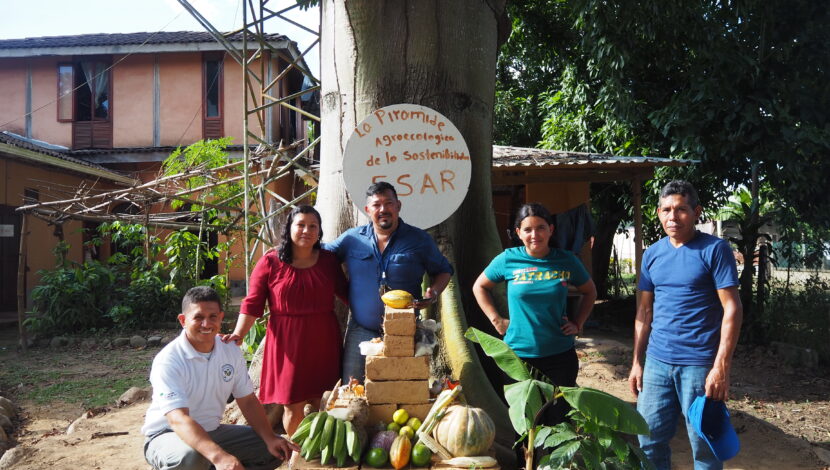The Unitarian Universalist Service Committee advances human rights through grassroots collaborations.
World Soil Day: We Are All Stewards of the Land

By UUSC Staff on December 5, 2022
Healthy societies have healthy soil.
December 5 is #WorldSoilDay, a perfect time to start taking soil health more seriously.
Healthy soil is one of the most important factors in mitigating climate change and its downstream consequences like extreme weather events, famines, floods, extinction, and climate-forced migration.
While soil around the world has been degraded due to human activity, unsustainable agricultural practices, and climate change, individuals and organizations—including a few of UUSC’s partners—are building momentum to heal that damage.
Soil Health is a Climate Justice Issue
Gardeners and farmers aren’t the only people who should be thinking about soil.
Soil health is deeply connected to climate justice, which calls for the protection and elevation of people facing the harshest effects of climate change.
The majority of people affected by soil degradation—whether from overuse, soil erosion, or soil contamination—live in developing nations and rely on the soil for their security. Poor soil quality impairs crop production, leading to food insecurity, poverty, and the inability to generate revenue. Soil degradation forces people from their homes, resulting in climate-forced displacement or migration, and sometimes suicide.
Promoting soil health should be a priority for anyone who cares about protecting our environment and human rights.
Deeper Than Topsoil
If we continue down the path we’re on, scientists predict that the world’s top soil will be depleted of nutrients within the next 60 years. We can’t let that happen.
However, advocating for soil health is about more than preserving the top layer.
It’s also about being on the side that advocates earth justice: A movement that supports the repatriation of land to beings that have been dispossessed of that land, forcibly removed from that land, eradicated, and exploited as much as the soil itself has been exploited.
This group includes the bacteria, insects, fauna, flora, and fungi, as well as the humans, like Indigenous peoples, Black people, and agriculturists trapped in political and financial systems that don’t allow a swift transition to sustainable agriculture.
Regardless of the life form, the beings in this group often have the passion and knowledge to be able to heal the soil and heal the Earth.
Partner Spotlight: Fundación San Alonso Rodríguez
For their anniversary celebration, UUSC partner Fundación San Alonso Rodríguez (FSAR) set up several spots around its grounds to demonstrate their work to the community and educate people on the Agroecological Sustainability Pyramid.
The pyramid (left) shows the building blocks of sustainable agriculture: The base needs soil, water, seeds, and sunlight. Once those things were in place, they produce fruits and vegetables like plantains, corn, and sugarcane.
One of their other projects is sustainable building using local earthen-based materials and traditional methods. FSAR is committed to a construction framework that defends cultural legacies, protects their ecological systems, leans on native knowledge and building traditions, and increases the skillsets of the community.
The project will contribute to the construction of 11 homes for families in two Indigenous Tolupana (an Indigenous group in Honduras) communities: Santa Marta and Santa Cruz. All in living in conjunction with the earth.
Learn More About Protecting Soil
Robust soil helps regulate water cycles, store carbon, support plant growth, and clean our water. It leads to healthy fungal networks, sustainable food systems, and keeps fragile ecosystems alive.
Start composting, get involved with soil initiatives near you (type “soil protection projects near me” into your preferred search engine) or see how you can support our Partners around the world who are caring for their grounds.
Here are a few more resources on soil, land restoration, and land grabs/exploitation:
- Soils Revealed
- The Carbon Cycle and Soil Organic Carbon | Cornell University
- Land Restoration Can Profoundly Benefit People and the Environment | Sustain What
- Stolen Lands: A Black and Indigenous History of Land Exploitation | YES! Magazine
- Indigenous and Black Communities Find Common Cause for Land Justice | YES! Magazine
- Justdiggit: Restoring dry land in Tanzania | Global Ideas
- An example of soil restoration practices
- World Soil Day | United Nations
Photo Credit: Fundación San Alonso Rodríguez

